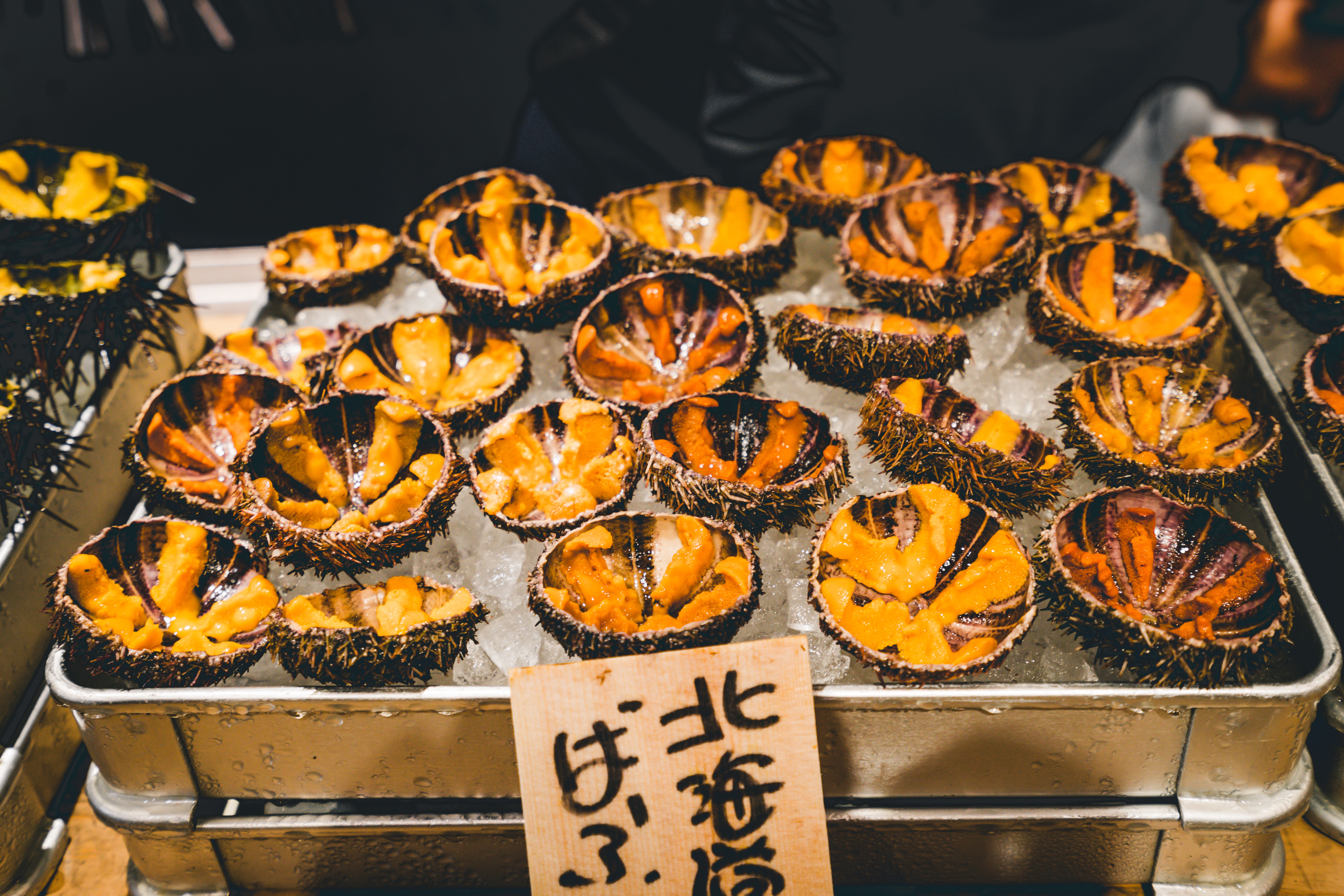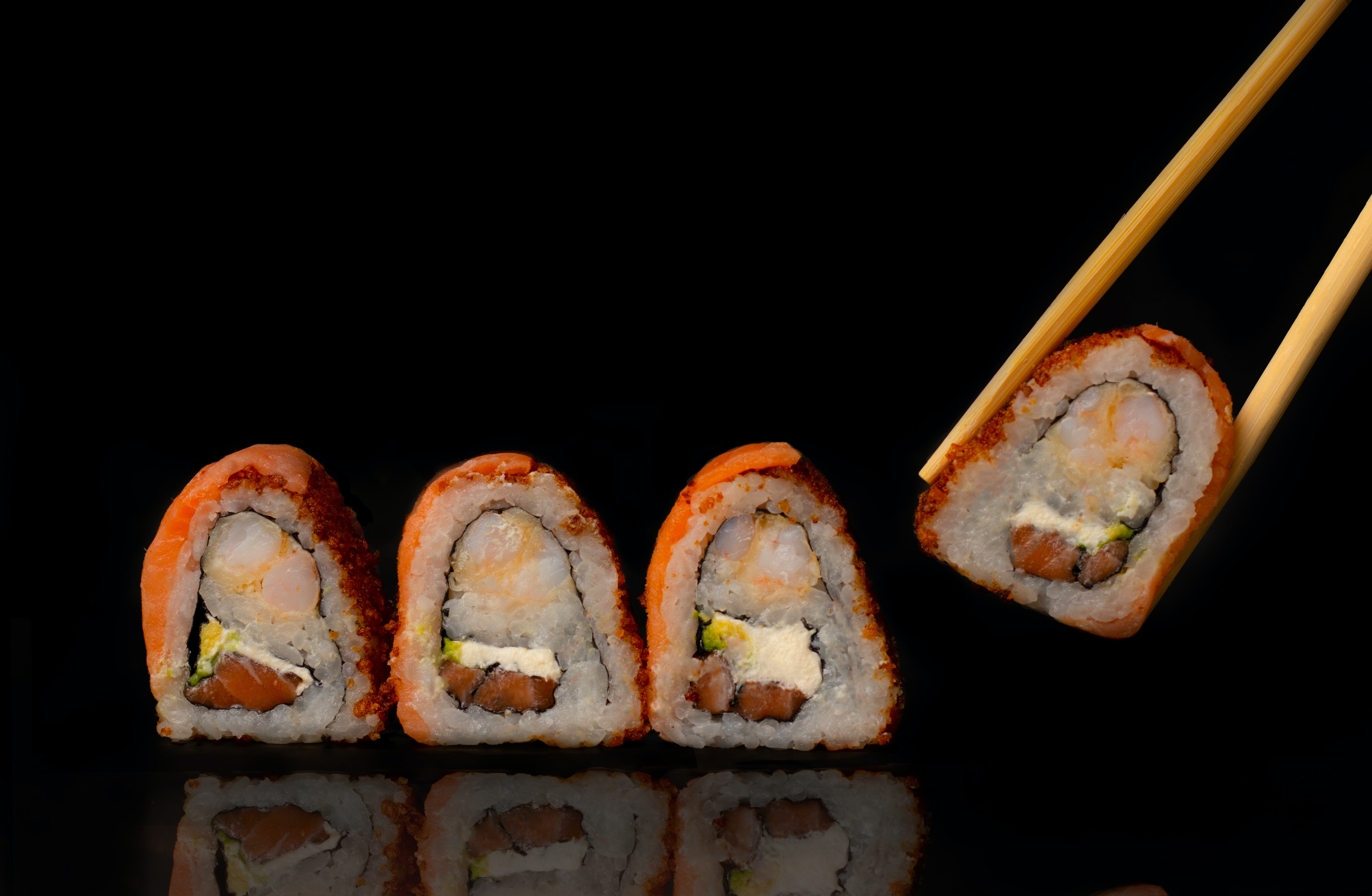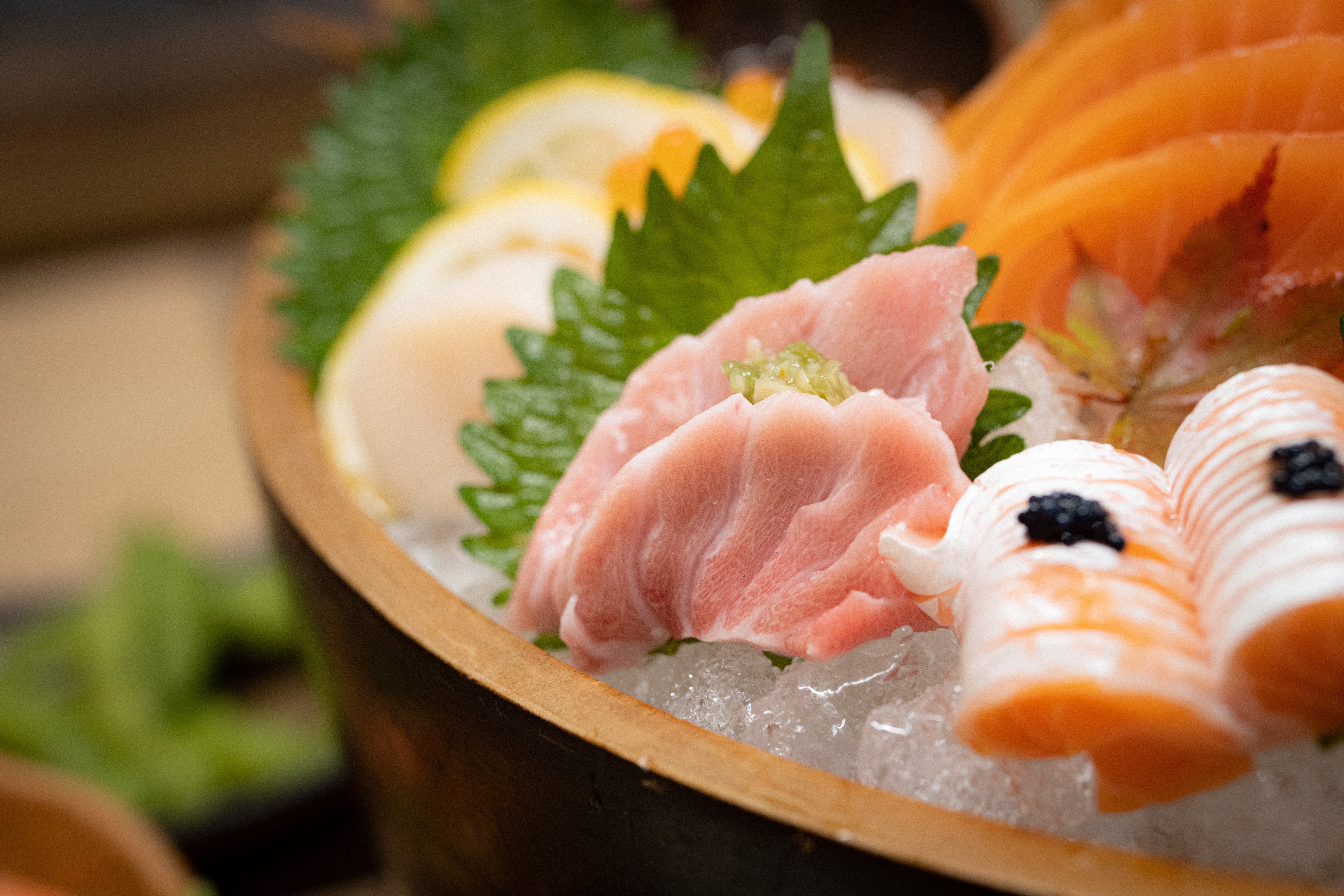Raw Deal: Sushi in Japan
Think of Japanese food and you’ll probably think first of sushi. But once you visit Japan—and believe us, you should—you’ll discover they treat sushi a bit differently. There, they reserve sushi for special occasions. When it’s properly made, it’s an expensive treat, bearing little resemblance to what we often see here.
Although fish is definitely not essential to sushi, the best places to eat it are still the fish markets in Tokyo and Osaka, where you’ll find the freshest samples. Tokyo’s Tsukiji market is the most famous — surrounded by notable restaurants such as Sushi Dai, Daiwa Sushi, or the harder to find Kagura Sushi that invented seared sushi. Tsukiji is the place to try taste sensations such as uni (sea urchin) and hokkigai (surf clam) as well as the creamy toro (tuna belly).

Photo: Fresh Uni at Tsukiji market
Sushi is best eaten in a specialist restaurant, called a sushiya. Many are surprisingly small, serving as few as 12–20 customers at a time—so you’ll know when you’ve found a good one judging by the number of people waiting in line by the door. Seated at a counter in front of the chef, or itamae as they are called in Japanese, you can watch him expertly prepare the food and chat about what’s on the menu, as this will vary with the day’s catch.
Sushi training takes many years under the tutelage of an elderly chef. The experienced supervision is most important for those chefs making sushi with fugu, or poisonous blowfish, a specialty in Osaka. These chefs require a three-year apprenticeship, and only 35% pass!

Photo: Sushi at the Japanese Restaurant
That’s not to say you can’t learn the basics of sushi in a short lesson, depending on how much you know your way around a kitchen. Tokyo Sushi Academy, Japan’s only sushi college, trains students in courses lasting from three months to a year, but also offers a two-hour lesson as a fun way to grasp the basics and gain a better appreciation of the skills of a top itamae.
The strength of Japanese cuisine, like Italy’s, is its regional variety, for each part of Japan has its specialty. In Osaka, the taste is for rice with more vinegar and sushi pressed in a box. This is part of Kansai-style sushi, the type first introduced to America, often using cooked ingredients such as an egg or tofu pouch with the sushi rice inside. Edo-style sushi is the classic nigiri of raw fish on top of rice. California rolls, as the name implies, were invented in America to hide the seaweed, but this “inside-out” style has now been imported back to Japan.

Photo: Sashimi
Sushi portions in Japan might be smaller than you’re used to at home. They’re bite-sized, so you can savor them slowly in one go. And feel free to use your hands rather than chopsticks, as you’ll be given a hot hand towel before the meal. Finally, in Japan tipping can be seen as an insult. Don’t try to pay the chef, either. Raw food hygiene and money don’t mix, so order drinks and the check from the wait staff.

